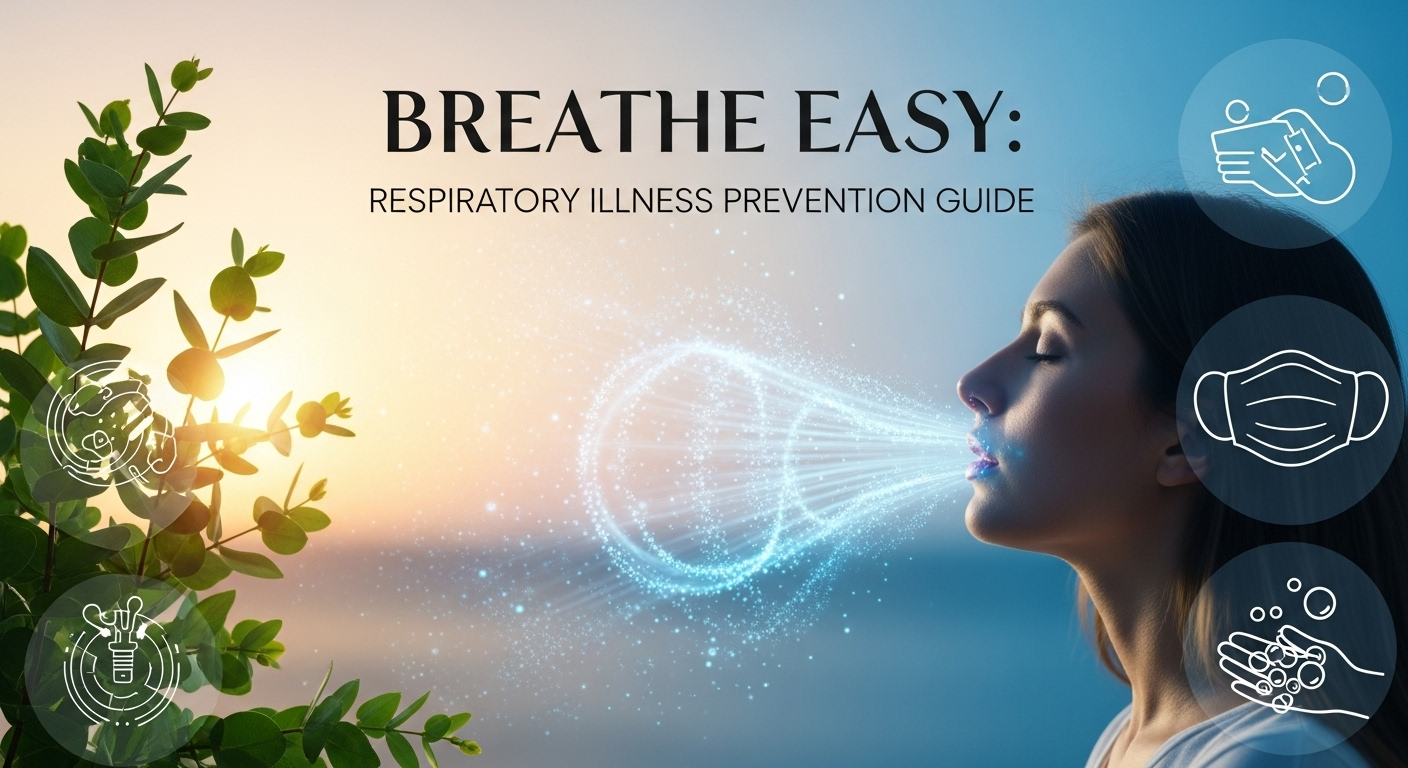In an ideal world, every breath we take would be clean, fresh, and invigorating. However, reality presents a landscape filled with invisible challenges: viruses, bacteria, pollutants, and allergens, all waiting for an opportunity to compromise our respiratory system. From the common cold that disrupts a work week to more serious conditions like influenza or pneumonia, respiratory illnesses are a persistent threat to our well-being. The good news is that we are not defenseless. By adopting a proactive and informed approach, you can significantly reduce your risk and fortify your body's natural defenses. These comprehensive prevention tips for respiratory illnesses are your best defense, serving as a practical guide to help you and your family navigate the seasons with greater confidence and health. This guide will empower you with the knowledge to build a resilient respiratory system, one healthy habit at a time. Breathe Easy: A Comprehensive Respiratory Illness Prevention Guide The Cornerstone of Prevention: Mastering Personal Hygiene The first line of defense against respiratory pathogens is not a complex medical procedure or an expensive supplement; it’s the consistent practice of good personal hygiene. Most respiratory viruses and bacteria are transmitted through droplets released when an infected person coughs, sneezes, or talks. These droplets can either be inhaled directly or can land on surfaces, where they can be picked up by our hands. From there, it’s a short trip to our eyes, nose, or mouth—the primary gateways for germs to enter the body. Therefore, mastering simple yet powerful hygiene habits is the single most effective, low-cost strategy to interrupt this chain of transmission. This isn't just about what you do when you feel sick; it’s about creating a daily routine that protects you and those around you. Think of it as building a shield. Every time you wash your hands correctly or cover a cough, you are reinforcing that shield, making it harder for opportunistic germs to find a way in. Consistency is the key. A single instance of forgetting to wash your hands after touching a public doorknob could be the one that leads to infection. By internalizing these practices, you transform them from conscious efforts into second nature, creating a formidable barrier against a wide array of respiratory illnesses. The profound impact of hygiene was demonstrated on a global scale during the COVID-19 pandemic, but its principles have been a cornerstone of public health for over a century. It's a testament to the fact that the simplest actions often yield the most significant results. Integrating these habits into your life doesn't just protect you during flu season or an outbreak; it provides year-round protection against countless pathogens, ensuring your respiratory system remains as healthy as possible. The Art of Effective Handwashing Handwashing is more than a quick rinse under the tap. To be effective, it must be thorough. The U.S. Centers for Disease Control and Prevention (CDC) recommends washing with soap and water for at least 20 seconds—roughly the time it takes to sing the “Happy Birthday” song twice. The friction from scrubbing, combined with the chemical properties of soap, works to break down the lipid envelope that surrounds many viruses, including influenza and coronaviruses, rendering them inactive and easily washed away. Make it a non-negotiable routine to wash your hands at critical moments: Before preparing or eating food. After using the restroom. After returning home from a public place (grocery store, office, public transport). After blowing your nose, coughing, or sneezing. Before and after caring for someone who is sick. When soap and water are not available, an alcohol-based hand sanitizer with at least 60% alcohol is a suitable alternative. Apply enough sanitizer to cover all surfaces of your hands and rub them together until they are dry. Mastering Respiratory Etiquette When you cough or sneeze, you can project respiratory droplets several feet. If you are infectious (even without knowing it), you are actively spreading germs into the air and onto surfaces. The best practice is to always cover your mouth and nose with a tissue, and then immediately dispose of the tissue in a closed bin. If a tissue isn’t available, cough or sneeze into the crook of your elbow, not into your hands. This simple act prevents you from contaminating your hands, which are a primary vehicle for spreading germs to other surfaces and people. Teaching this "vampire cough" to children from a young age is an excellent way to instill lifelong healthy habits. Furthermore, during periods of high community transmission of illnesses like the flu or COVID-19, wearing a high-quality, well-fitting mask in crowded indoor spaces provides an additional layer of protection, both for you and for others. It contains your own respiratory droplets and filters the air you breathe in, significantly reducing the likelihood of transmission. Avoid Touching Your Face: The T-Zone Rule The average person touches their face dozens, if not hundreds, of times per hour, often without even realizing it. This subconscious habit is a direct route for germs from your hands to enter your body. Your eyes, nose, and mouth form what is often called the “T-Zone,” the mucous membranes that are most vulnerable to infection. Even with diligent handwashing, you can pick up germs between washes. Therefore, making a conscious effort to keep your hands away from your T-Zone is a critical preventative measure. Breaking this habit can be challenging. Start by simply becoming aware of how often you do it. Place sticky notes on your computer monitor or desk as a reminder. If you have an itch on your face, try to use a clean tissue instead of your bare fingers. Reducing face-touching effectively closes one of the most common entry points for respiratory pathogens, complementing your hand hygiene efforts and making your overall defense strategy much more robust. Bolstering Your Body's Natural Defenses: The Immune System While external barriers like hygiene are crucial, your ultimate protection against respiratory illness comes from within: your immune system. This complex network of cells, tissues, and organs works tirelessly to identify




